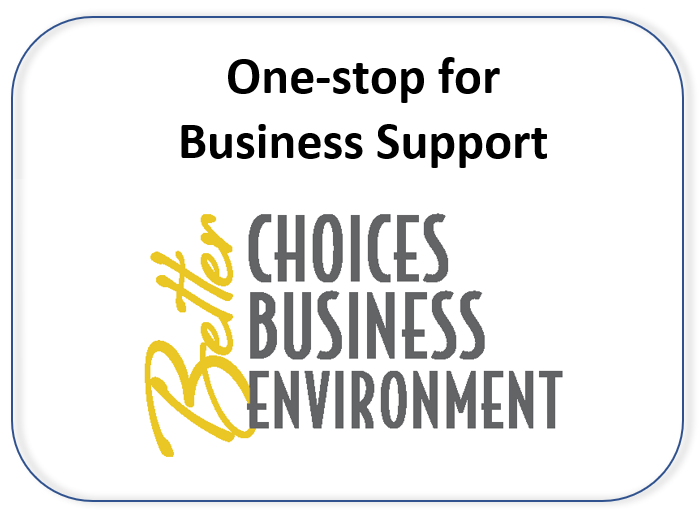Air regulations
Air quality regulations are enacted to minimize the amount of pollution present in the air we breathe. For Wisconsin, both the U.S. Environmental Protection Agency and state Department of Natural Resources implement and enforce a range of air pollution regulations. This page will guide you through the different types of air pollution regulations that may affect your business and provide links to specific regulations.
State regulations
State regulations
All state regulations are contained in the Wisconsin administrative code. Each chapter is available in PDF format, and the best place to start is the Wisconsin Administrative Code table of contents for Natural Resources (NR) codes. Air regulations are contained in chapters NR 400-499.
Some air regulations that affect many small businesses include:
- NR 400: Definitions
- NR 405, 406, 408: New Source Permits
- NR 407: Operation Permits
- NR 410: Air Fees
- NR 415: Particulate Matter (PM) Limits
- NR 419-425: Volatile Organic Compound (VOC) Rules – RACT & LACT
- NR 431: Visible Emissions
- NR 438: Emissions Inventory
- NR 455: State Hazardous Air Pollutant Rule
It is important to review all requirements in case there is a unique situation that affects your business. Additional detail is provided here for some of the rules.
Chapter NR 438, Annual Air Emissions Inventory Rule:
Even if exempt from needing an air permit, most facilities will likely have to report their annual emissions to the Air Emissions Inventory. If your facility has emissions of even one pollutant over a threshold in ch. NR 438, you must submit an air report for that calendar year. Reports are due by March 1 for the previous calendar year emissions. The system used for that report is all online and accessible through the DNR’s Switchboard.
The reporting levels vary by pollutant. For example, you have to file the report if you have more than 6,000 pounds per year of VOCs or Ammonia, or more than 10,000 pounds per year of particulate matter or nitrogen oxides (which comes from fuel burning). Sources pay an annual fee if required to have an air pollution operation permit. The amount depends on the type of permit issued and whether the facility is a Title V source or Non-title V source.
The Air Emissions Inventory webpage has links to DNR Switchboard as well as tutorials and other resources to help you complete your report.
Chapter NR 445, the state hazardous air pollutant rule:
Both the EPA and the DNR have regulations affecting emissions of air toxics, which are also called hazardous air pollutants (HAPs). The regulations created by each agency are very different in the way they apply to businesses. The DNR's regulations contain a provision in which, if a business has to reduce emissions of certain HAPs under EPA's rules, that business does not have to apply the DNR's regulations to those same HAPs. Because the DNR and the EPA do not regulate the exact same HAPs, you should review both sets of rules to see whether they affect your business. Select the Federal regulations tab above for information on EPA's HAP rules.
Chapter NR 445, Wis. Adm. Code, (State Hazardous Air Pollutant Rule) was last revised 2004. All facilities affected by the rule should be in compliance. The rule changes allowed for options in how a facility demonstrates compliance with the rule.
Information on the rule and how it might apply to a company can be found on the DNR's air toxics and mercury page. The "Chemical spreadsheet tool" tab has an Excel spreadsheet which allows you to filter the list based on the chemical name or CAS# of a HAP and quickly find the NR 445 threshold(s) used to evaluate if your operation complies.
- Find a specific contact at:
Air Management Program contacts
Ozone depleting compounds
Refer to the DNR's Refrigerant recovery program web page for more information.
Federal regulations
The EPA's regulations, including the Clean Air Act, are spelled out in the Code of Federal Regulations. To find a particular rule, you can go to the EPA's Laws & Regulations page or the Electronic Code of Federal Regulations site. To comment on any proposed federal regulations, go to Regulations.gov.
Accidental release or RMP rule
The EPA's RMP Rule is aimed at preventing and minimizing the consequences of accidental releases of hazardous chemicals. This rule requires companies with listed chemicals in sufficient quantities to submit a risk management plan to EPA. To learn more about the EPA's RMP Rule page. The DNR's SBEAP has a brief fact sheet that describes U.S. EPA's Accidental Release Prevention Rule (112r RMPs) (SB-102).
National Emissions Standards for Hazardous Air Pollutants (NESHAP)
The EPA is required under s. 112, Clean Air Act, to write rules called MACT (maximum achievable control technology) standards as part of their national emissions standards for hazardous air pollutants (NESHAP) program. The MACT standards are generally applied to major sources.
The EPA also developed area source rules under the NESHAPs. These rules may use MACT or GACT (generally achievable control technology) standards, depending on factors related to the ability of the smaller sources to install controls or use best management practices.
All of the EPA's NESHAP rules are final. Check EPA's National Emission Standards for Hazardous Air Pollutants page for links to detailed information about each of the rules issued by EPA. They are listed by Source Category. EPA has created a few Regulatory Navigation Tools for NESHAP, to help a facility walk through whether the rule is applicable to their operations.
For information on reporting and notification requirements for NESHAP rules, refer to the DNR's Frequently asked questions NESHAP page.
Regulatory resources
If you have an issue regarding regulatory enforcement and compliance activities by a federal agency, you can provide comments to the Small Business Administration's (SBA) National Ombudsman. Comments are included in the SBA's national ombudsman's annual report to Congress.
| Additional resources | |
|---|---|

